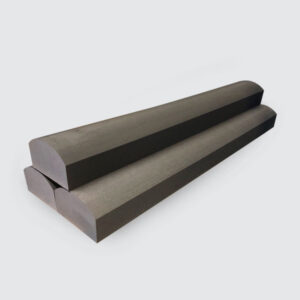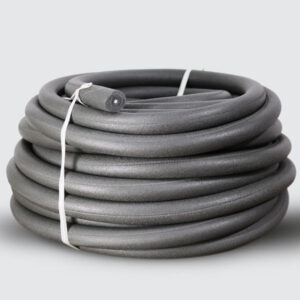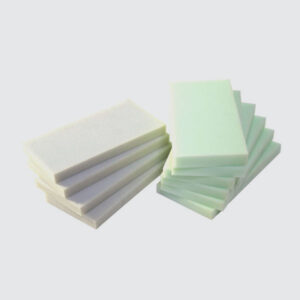




If you like to make a tool box to hold automotive painting equipment that is regularly cleaned with thinners, EVA or PE are both splash resistant to paint thinners and paint strippers.
Neolon XPE, PE and EVA are also resistant to chemicals such as fuels, oils and cleaners. Spec sheets should be requested for other chemicals.
We design and CNC with waterjets, knife cutters and routers for a precision fit that lasts, meaning your tools will not come loose – resulting in replacement foam.
For tool control or DIY tool boxes, tool walls, shelfs, etc we frequently use a high density PE block with a thin, higher density PE top.
Note that many DIY tool box foams use EPE foam, typically used for packaging, EPE is not temperature resistant and will break down if exposed to any thermal or mechanical stresses.
Yes you can easily clean a EVA, PE or Neolon foam tool box, wall or shelf. Simply use a degreaser and hose down with water. Note that EPE foams typically used for packaging are not chemically resistant and will break down.
We often sell insulated foil foam for engine bays and tubes or engine associated plumbing. This is make from our Neolon XPE foam which is tested to a melting point of 189 degrees Celsius without signs of shrinkage, it’s also flame retardant.
Note that other foams become unpredictable at these temperatures.
Certainly! although, usually this is not cost effective.
Machine setup times and any drawings required for the CNC cutting or routing process should be considered.
Send us a message using the button in the website footer.
Yes, foams can work in a submerged application, commonly fuels or water. Often a correctly specified foam will exceed the life of other materials, although the application of the foam needs to be tested in the submerged environment.
A very high density EVA foam is best for submerged exposure to chemicals.
Generally there are 2 options white (EPE) or Grey (Neolon XPE).
White (EPE) foam is commonly sold and used, however it has a limited lifespan and doesn’t performance well in long term temperature cycles.
Grey (Neolon) foam is commonly used by boat builders who want a longer lasting product (third-party aged tested for 20+ years) and that is resistant to any chemicals or petrol it may be exposed to.
*Black (EPE) foam should not be used outdoors, it has a low resistance to harsh UVs/ sunlight.
We have tested EVA Foam to be subjected to temperatures up to 70 degrees Celsius without noticeable signs of shrinkage (less than 3%).
We have tested PE Foam to be subjected to temperatures up to 80 degrees Celsius without noticeable signs of shrinkage (less than 3%).
We have tested Neolon XPE Foam to be subjected to temperatures up to 110 degrees Celsius, with a melting point of 189 degrees Celsius.

PJ Bowers is a proud donator to NV Access – Developing software solutions to give the blind and vision impaired access to computers.

PJ Bowers is a member of the Australian Industry & Defence Network.

ABN: 48 262 646 574
Our corporate website is available at: pjbowers.com.au
Hours: Mon-Fri 8:00AM – 4:00PM
Phone: 07 5593 8277
13 Central Drive,
Burleigh Heads, Queensland 4220



